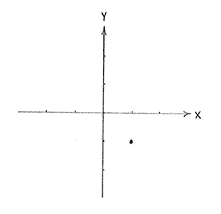Lösung 4.1:7d
Aus Online Mathematik Brückenkurs 1
(Unterschied zwischen Versionen)
K (hat „Solution 4.1:7d“ nach „Lösung 4.1:7d“ verschoben: Robot: moved page) |
|||
| Zeile 1: | Zeile 1: | ||
| - | + | Wir benutzen wie vorher quadratische Ergänzung | |
{{Abgesetzte Formel||<math>\begin{align} | {{Abgesetzte Formel||<math>\begin{align} | ||
| Zeile 6: | Zeile 6: | ||
\end{align}</math>}} | \end{align}</math>}} | ||
| - | + | und erhalten die Gleichung | |
{{Abgesetzte Formel||<math>\begin{align} | {{Abgesetzte Formel||<math>\begin{align} | ||
| Zeile 13: | Zeile 13: | ||
\end{align}</math>}} | \end{align}</math>}} | ||
| - | + | Der einzige Punkt der diese Gleichung erfüllt, ist <math>(x,y) = (1,-1)</math>, nachdem die linke Seite der Gleichung größer als null für alle anderen ''x''- oder ''y''-Werte wird. | |
| - | + | ||
<center> [[Image:4_1_7_d.gif]] </center> | <center> [[Image:4_1_7_d.gif]] </center> | ||
Version vom 18:23, 2. Apr. 2009
Wir benutzen wie vorher quadratische Ergänzung
| \displaystyle \begin{align}
x^{2} - 2x &= (x-1)^2 - 1^2\,,\\[5pt] y^{2} + 2y &= (y+1)^2 - 1^2\,\textrm{.} \end{align} |
und erhalten die Gleichung
| \displaystyle \begin{align}
(x-1)^2 - 1 + (y+1)^2 - 1 &= -2\\ \Leftrightarrow\quad (x-1)^2 + (y+1)^2 &= 0\,\textrm{.} \end{align} |
Der einzige Punkt der diese Gleichung erfüllt, ist \displaystyle (x,y) = (1,-1), nachdem die linke Seite der Gleichung größer als null für alle anderen x- oder y-Werte wird.

